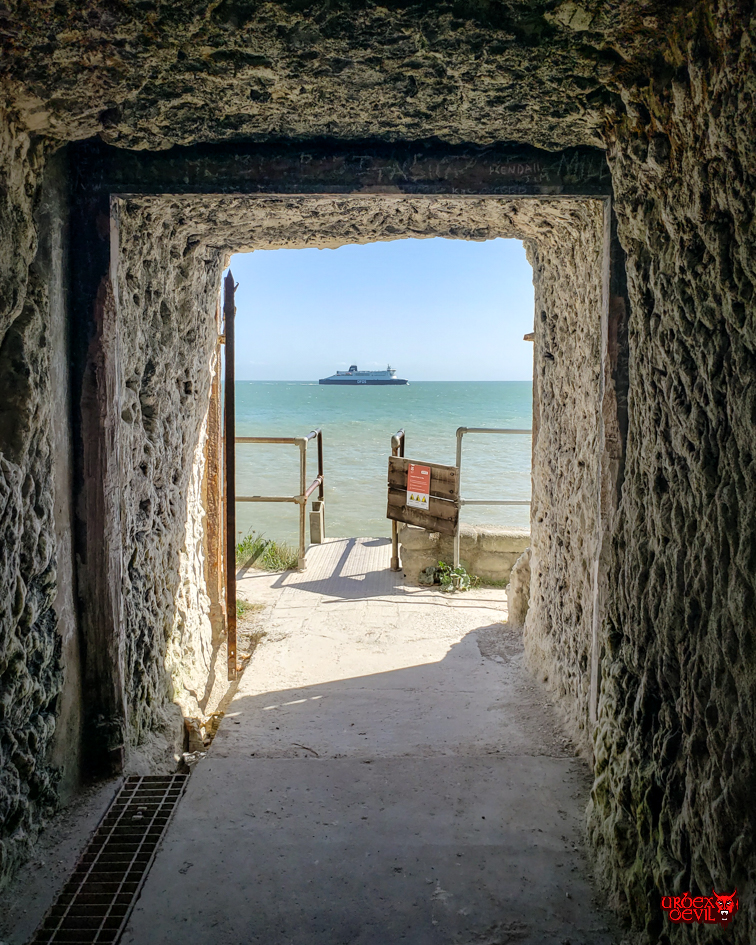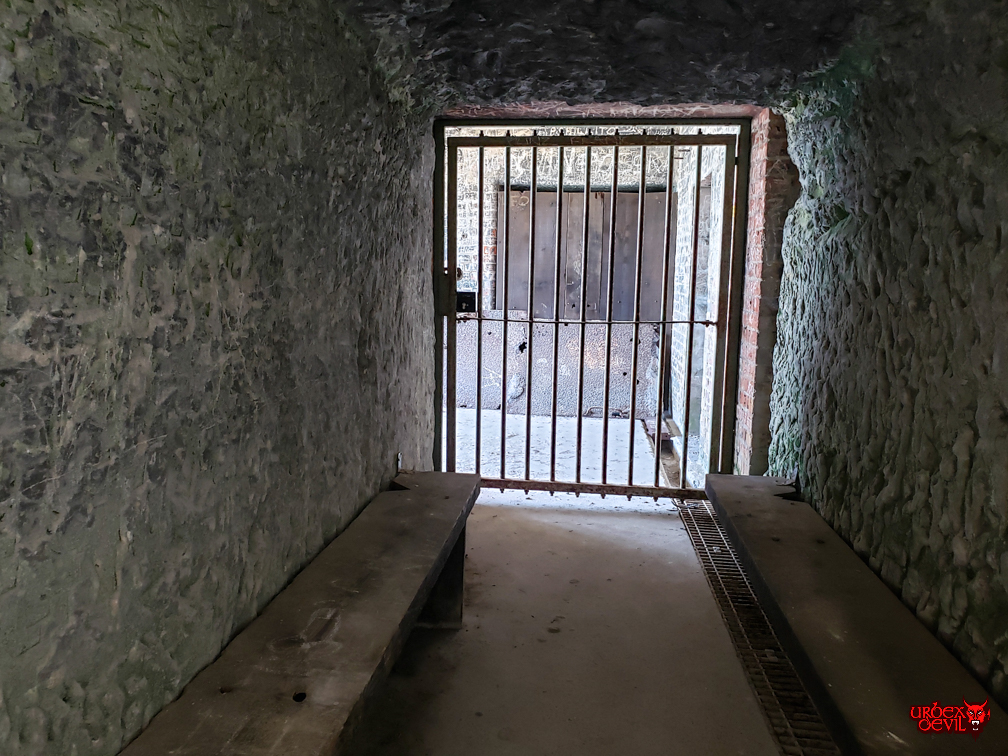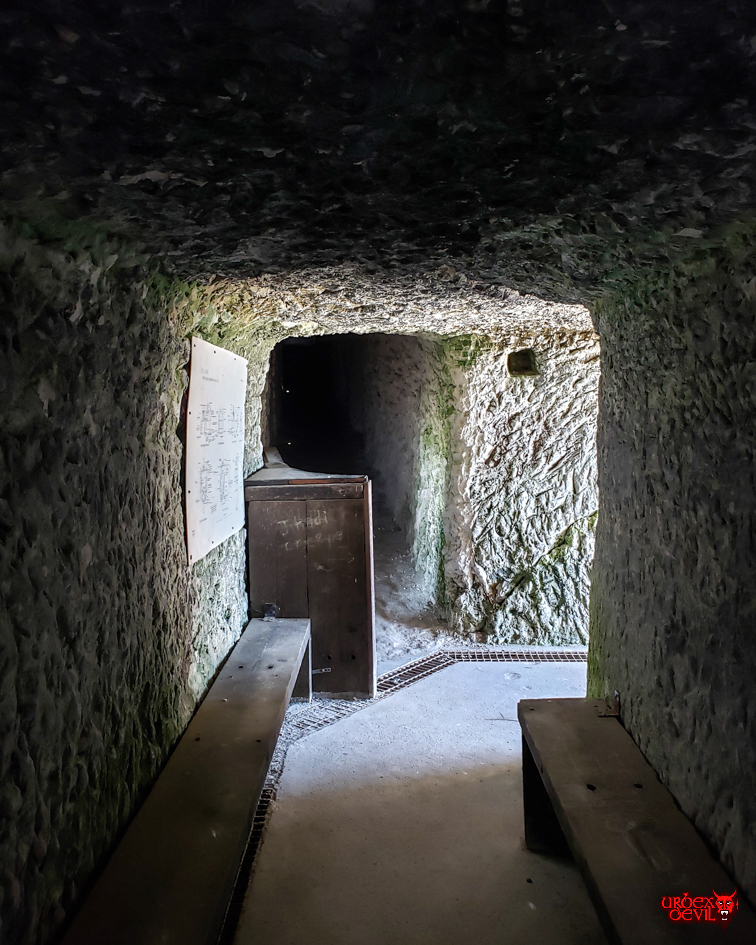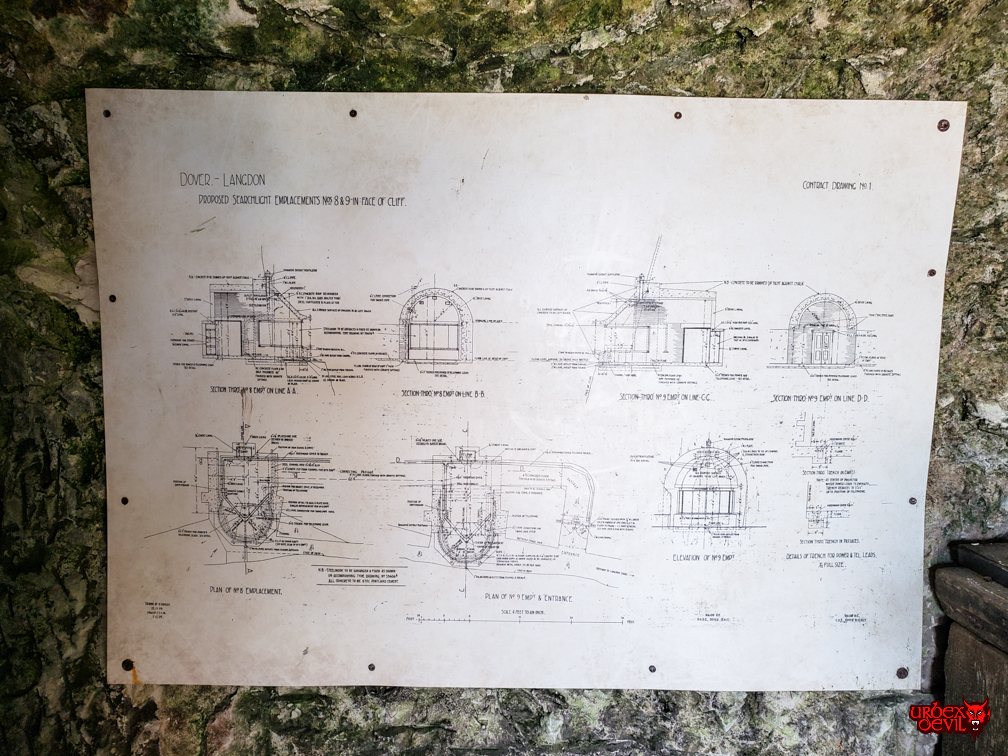Knowing of this place but not knowing just how much it had been renovated for public access made this feel a little less like an urbex trip, yet still worth the visit.
This place looks to not have changed drastically since seeing photos years back, other than the fact it’s now been opened to the public with a brand new tunnel dug into the cliff replacing the now lost bridge along the outside of the cliff.
I didn’t feel the need to get the actual camera out so took these in a lazy fashion with my phone.
History below borrowed from the National Trust website
Three searchlight positions. Two built at the time of Langdon Battery in 1898-1909 (eastern and middle one) to light up the Eastern Arm of the Harbour. The western position was built in the Second World War. Each searchlight position comprises a semi-circular platform of reinforced concrete, reached by a tunnel at the rear. The tunnel/passage, rectangular in profile, links all three positions. Curved iron shutters on rollers were pulled back to reveal the lights powered by a generator and engine house at the top of the cliff path. In each ceiling there is a pipe for a stove and a pipe for ventilation to remove the heat of the lights. On the walls evidence of cupboards, telephone and other signalling equipment can be identified by the fittings and marks left on the paint work. At the back wall is a recess for a cupboard and further recesses occur in the linking passageway. In the passage to the last searchlight position, the back wall had two holes set into the chalk at approximately 1m height. May have something to do with cabling ? On the back wall by the brick work to the cupboard recess is a flattened rectangular area reaching from floor to ceiling. It has four rectangular holes set in a line down the centre with smaller square holes off set to the central ones at either side.
In 1926 the manning of the Coast Artillery Searchlights being the responsibility of the Fortress Royal Engineers TA (Arnold 1982).
The following description of the site was written by John Guy as part of an account for the Kent Defence Group.“Langdon Bay searchlights are reached by a footpath known as Langdon Steps. This footpath has only been open to the public since the end of WWII and the abolition of the Coast Artillery. before the war it was fenced in and nearby lived a watchman and his dogs in a small bungalow. …. The search lights were built into the cliffs to illuminate the Eastern approaches to Dover Harbour, and as the fighting lights for Langdon Battery.
The footpath descends the cliff in a zig-zag fashion until it terminates about 20ft above the beach….. At the bottom of the path there is a tunnel going into the cliffs which leads to the three searchlight emplacements set in the cliffs about 6-7m up from the beach. At the tunnel entrance a pair of heavy metal gates still swing on their ornamental metal gate-posts. Further inside there is a wooden lintel which suggests that there may have been a secondary pair of wooden doors at one time.
The tunnel has a square cross-section and is about 2m high. Once inside the cliff, [the tunnel] takes a sharp turn to the left and after a short distance the first searchlight position is reached. For its whole length the tunnel is unlined chalk with a concrete floor, at the back of this floor is a sunken channel to accommodate the power cables for the searchlights. The first two positions were built in 1909 with the third one being added in WWII, hence its different construction.
The first two positions are brick-lined with a high, arched roof, in the apex of which is a ventilator to take the heat of the light away. The semi-circular opening overlooking the sea and harbour entrance had sliding steel doors that could be moved around to that any arc could be open for the light to shine through, leaving the rest closed against small fire. Some of these shutters are still there, rusted in place.The third position is smaller with a low, flat concrete roof. In the wall behind each position are recesses of varying heights and of about one foot depth. In the wall behind the first and second positions are a further three recesses, these have been lined with concrete although the rest of the tunnel is of bare chalk. The remains of the switchboards are still in situ.
The power for the lights was supplied by generators in a building near to the top of Langdon Steps…..” (Guy, J. n.d. c. 1970s).





